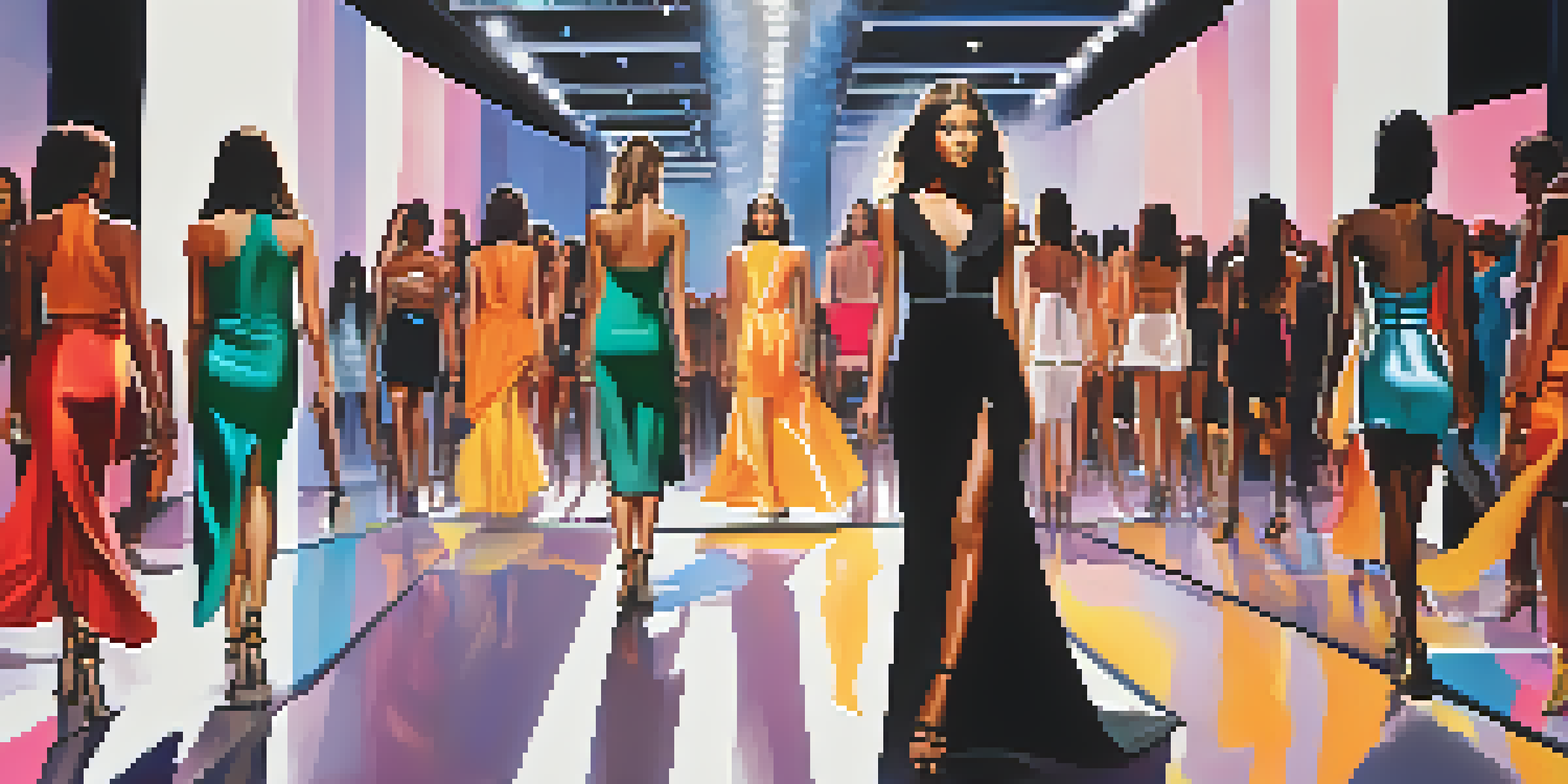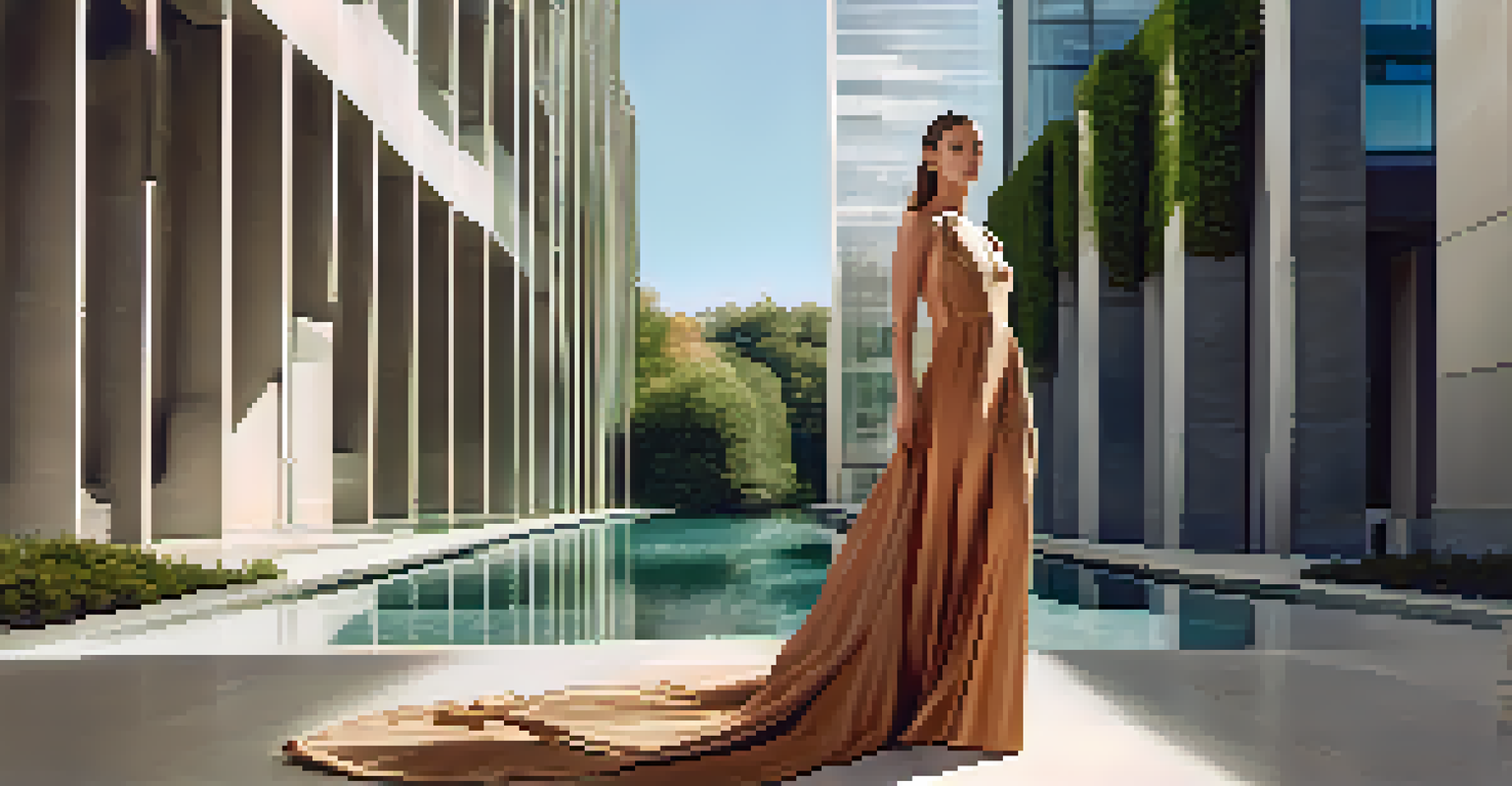The Role of Photography in Fashion Journalism Today

The Evolution of Fashion Journalism Through Photography
Fashion journalism has come a long way from the days of simple print. With the rise of photography, visual storytelling became a key element, bringing garments and styles to life in a way that words alone could not. Photographers have become essential collaborators, crafting images that encapsulate the essence of fashion trends and cultural movements.
A picture is worth a thousand words.
The transition from print to digital media has further amplified the role of photography. High-quality images are now shared instantly across social platforms, creating a faster-paced environment where visual appeal is crucial. This shift means that fashion journalists must now consider how their stories are visually represented as strongly as the written content.
As we look at the current landscape, it's clear that photography is not just an accessory to fashion journalism; it’s a driving force. The combination of compelling visuals with insightful writing creates a richer narrative, allowing audiences to connect more deeply with fashion stories.
The Power of Visual Storytelling in Fashion
Visual storytelling is at the heart of effective fashion journalism today. Photographers capture not just clothing but the emotions and contexts surrounding fashion, creating a narrative that resonates with viewers. This storytelling aspect brings the audience into the world of fashion, making them feel part of the journey.

For instance, a runway photograph can evoke the excitement of a live show, while an editorial shot can convey a mood or theme that enhances the overall message. These images often become iconic, representing trends and styles far beyond the articles themselves. As a result, the right photograph can significantly impact a fashion brand’s perception.
Photography Shapes Fashion Journalism
Visual storytelling through photography has become essential in fashion journalism, enhancing the narrative and audience engagement.
Moreover, visual storytelling allows for diverse representations of fashion. By highlighting different cultures, body types, and styles through photography, fashion journalism can promote inclusivity and broaden its audience. This evolution reflects a richer, more multifaceted view of what fashion represents today.
The Influence of Social Media on Fashion Photography
Social media platforms like Instagram and Pinterest have transformed the landscape of fashion photography. These platforms allow photographers and fashion journalists to share their work instantly, reaching a global audience. The immediacy of social media means that the impact of an image can be felt in real-time, making it a powerful tool for both exposure and engagement.
Fashion is the armor to survive the reality of everyday life.
Additionally, social media has democratized fashion photography. Emerging photographers can showcase their work without needing traditional media gatekeepers, leading to a diverse array of voices and perspectives in the industry. This shift not only fosters creativity but also challenges established norms and encourages innovation.
However, with this abundance of content comes the challenge of standing out. Fashion journalists must now create striking visuals that capture attention quickly, often competing with countless images in a crowded feed. This necessity has led to a more dynamic and competitive environment, pushing the boundaries of creativity in fashion photography.
The Role of Photography in Fashion Brand Identity
Photography plays a crucial role in shaping a fashion brand's identity. A brand's visual aesthetic is often communicated through its images, influencing how consumers perceive its values and style. From high-fashion editorials to street style photography, the visuals tell a story that defines a brand's essence.
For example, luxury brands often employ photographers who can create an exclusive and aspirational image, while streetwear brands might focus on relatable, everyday looks. This strategic use of photography helps in creating a distinct brand persona that resonates with the target audience. Consumers are not just buying clothes; they're buying into a lifestyle.
Social Media's Impact on Fashion
Platforms like Instagram have revolutionized fashion photography, allowing instant sharing and giving rise to diverse voices in the industry.
Moreover, consistent photographic styles across campaigns and editorial content reinforce brand recognition. As consumers scroll through their feeds, familiar visual cues can evoke strong associations with a brand, enhancing loyalty and engagement. In this way, photography becomes a vital part of a brand's marketing strategy.
The Impact of Technology on Fashion Photography
Advancements in technology have significantly influenced fashion photography, allowing for more creative possibilities. High-resolution cameras, drones, and editing software have expanded the tools available to photographers, enabling them to capture stunning visuals in innovative ways. This tech evolution not only enhances the quality of images but also opens up new avenues for storytelling.
For instance, the use of virtual reality and augmented reality in fashion photography allows audiences to experience fashion in immersive environments. These technologies create unique opportunities for engagement, allowing consumers to see how clothing fits in real life or even to explore virtual fashion shows from the comfort of their homes.
As technology continues to evolve, so does the role of photography in fashion journalism. Photographers must stay updated with the latest trends and tools to remain competitive in this fast-paced industry. Embracing these changes can lead to fresh, exciting content that captivates audiences and keeps them coming back for more.
The Collaborations Between Photographers and Fashion Journalists
Collaboration is key in the world of fashion journalism, and photographers play a central role in this process. Fashion journalists often work closely with photographers to conceptualize shoots that enhance their stories. This teamwork can lead to innovative approaches that elevate both the written content and the visuals.
These partnerships can also lead to the creation of unique narratives. A photographer’s eye can bring unexpected angles or themes to a story, while a journalist’s insights can guide the visual direction. This synergy often results in a more cohesive and compelling final product that captivates readers and viewers alike.
Collaboration Drives Creativity
The partnership between photographers and fashion journalists fosters innovative storytelling that captivates audiences across various formats.
Furthermore, collaborations can extend beyond traditional formats. With the rise of multimedia journalism, projects may involve not just photography but also video, illustrations, and interactive elements. This diversification allows for richer storytelling that can engage audiences on multiple levels.
The Future of Photography in Fashion Journalism
Looking ahead, the future of photography in fashion journalism appears vibrant and full of possibilities. As trends evolve and technology advances, the ways in which stories are told will continue to transform. Fashion journalists and photographers who embrace change will find new opportunities to connect with audiences.
The growing importance of sustainability and ethical fashion also presents a chance for photographers to tell compelling stories around these themes. By capturing the realities of fashion production and the impact on communities and the environment, photography can play a role in advocating for positive change in the industry.

Ultimately, as fashion journalism continues to evolve, photography will remain a cornerstone, enriching narratives and enhancing the connection between brands and consumers. The interplay between images and words will only deepen, creating a more integrated and engaging reading experience for all.